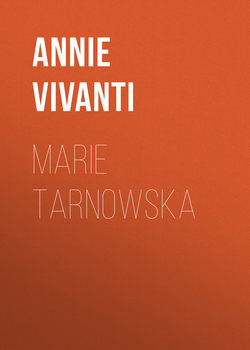Читать книгу Marie Tarnowska - Annie Vivanti - Страница 3
TO THE READER
ОглавлениеThis book is not written to plead Marie Tarnowska's cause. The strange Russian woman whose hand slew no man, but whose beauty drove those who loved her to commit murder for her sake, will soon have ended her eight years' captivity and will come forth into the world once more.
I have not sought in any way to minimize her guilt, or attenuate her responsibility for the sin and death that followed in her train. Though she must be held blameless for the boy Peter Tarnowsky's tragic fate and even for Dr. Stahl's suicide, yet Bozevsky's death, Naumoff's downfall and the murder of Count Kamarowsky will forever be laid at her door.
I have tried to convey to the cool, sober mind of the Anglo-Saxon reader—to whom much of this amazing story of passion and crime may appear almost incredible—that sequence of tragic events which brought Marie Nicolaevna to her ruin.
Weighted by a heritage of disease (her mother was a neurasthenic invalid and two of her aunts are even now confined in an insane asylum in Russia), she was married when still on the threshold of girlhood and swept into the maëlstrom of a wild life—a frenzied, almost hallucinated, existence such as is led by a certain section of the Russian aristocracy, whom self-indulgence drives to depths of degeneracy hardly to be realized by the outside world.
With the birth of her child, Tania, Marie Tarnowska's fragile health broke down completely, and the few years preceding the tragedy which led to her arrest were spent traveling through Europe in a feverish quest of health or at least of oblivion of her sufferings. According to such medical authorities as Redlich, Fenomenof, Rhein, Bossi, and many other eminent gynecologists and alienists, she is, and has been for some years past, suffering from a slow form of blood poisoning which affects the nervous centers and the brain, and which—as I myself had a painful opportunity of witnessing when I saw her in prison—causes periodic cataleptic seizures that imperil her life.
It was by one of her medical advisers, Professor Luigi Bossi, of the University of Genoa, that the idea of this book was first given to me.
“I was called as an expert for the defense at the Venice trial,” said the Professor, “and I was grieved and indignant at the heavy sentence inflicted upon this unhappy woman. Marie Tarnowska is not delinquent, but diseased; not a criminal, but an invalid; and her case, like that of many other female transgressors, is one for the surgeon's skill and the physician's compassionate care, not for the ruthless hand of the law. Indeed,” the illustrious Professor continued, “it is becoming more and more a recognized fact that many cases of criminality in woman have a physical, not a moral origin. By her very mission—maternity—woman is consecrated to pain; and whereas by nature she is a creature of gentleness and goodness, the effect of physical suffering, of ailments often unconfessed—nay, often unrealized by herself—is to transform her into a virago, a hypochondriac, or a criminal. Then our duty is to cure her, not to punish her.
“It may be merely a question,” he explained, “of a slight surgical intervention; sometimes even brief medical treatment is sufficient to save a woman's life and reason. The wider knowledge of this simple scientific fact in the social life of our time would redeem and rehabilitate thousands of unfortunate women who people the prisons and the madhouses of the world.
“As for the unhappy Countess Tarnowska,” added Professor Bossi, “the Venetian tribunal refused to regard her as a suffering human being, but flung her out of society like some venomous reptile. Read these notes that she wrote in prison,” he said, placing in my hand a book of almost illegible memoranda. “If they touch your heart, then do a deed of justice and generosity. Go to the penitentiary of Trani, see the prisoner yourself, and give her story to the world. So will you perform an act of humanity and beneficence by helping to diffuse a scientific truth in favor, not of this one woman alone, but of all women.”
After glancing through the strange human document he had given me I decided to do what he asked; for, indeed, from those poor, incoherent pages there seemed to rise the eternal cry of suffering womanhood—the anguished cry of those that perpetuate the gift of life—which no sister-soul can hear unmoved.
Thus it was that my mind was first directed to the theme of this book and that I undertook the task—fraught with almost insuperable difficulties—of breaking down official prohibitions and reaching the Russian captive in her distant Italian prison.
And now that I have been brought face to face with that strange and mournful figure, now that I have heard her story from her own pale lips, I am moved by the puissant impulse of art, which takes no heed of learned theory or ethical code, to narrate in these pages the profound impression made upon me by that tragic personality, by the story of that broken life.
I have endeavored to do so with faithfulness, exaggerating nothing, coloring nothing, extenuating nothing. It will be for the pontiffs of science and morals to achieve the more complex task of drawing conclusions and establishing theories that may one day diminish injustice and suffering in the world.
A. Vivanti Chartres.
